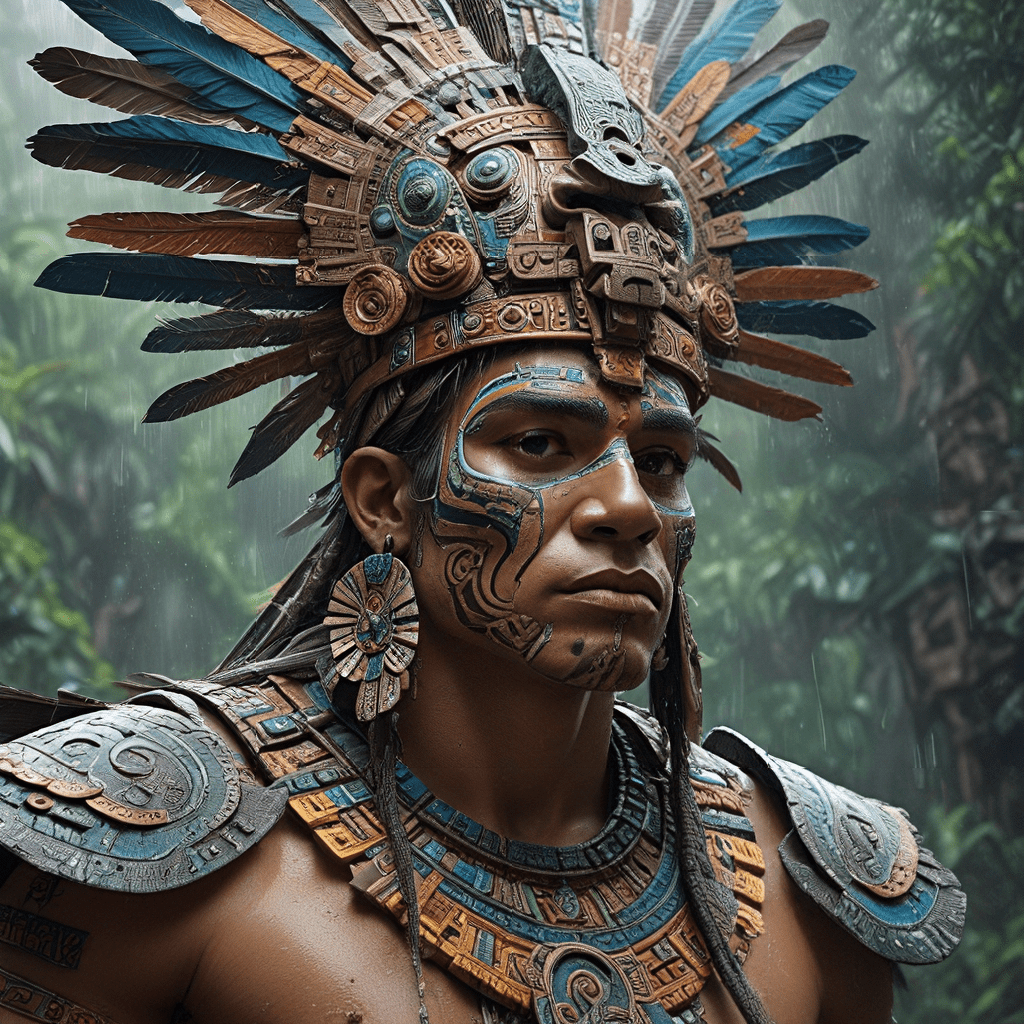Tlaloc: The Aztec God of Rain and Fertility
Introduction: The Importance of Rain and Fertility in Aztec Culture
The Aztec civilization, known for its sophisticated culture and complex social structures, thrived in the Valley of Mexico. Their lives were profoundly intertwined with the natural world, and they deeply understood the importance of rain and fertility for their survival. Without sufficient rainfall, their crops would fail, resulting in famine and hardship. Life itself depended upon the bounty of the earth, and the Aztecs recognized the critical role that rain and fertility played in their existence. This understanding led to the worship of a powerful deity known as Tlaloc, the god of rain, thunderstorms, and fertility.
The Pantheon: Tlaloc’s Place in the Aztec Deities
In the rich tapestry of Aztec mythology, Tlaloc held a prominent position. He was one of the most important and revered deities, second only to the supreme god Huitzilopochtli. Tlaloc's significance stemmed from his control over the lifeblood of the Aztec civilization – water. He was seen as both a benevolent and fearsome figure, capable of delivering life-giving rain but also unleashing devastating storms.
Characteristics and Attributes: The Depiction of Tlaloc
Tlaloc was typically depicted as a formidable and imposing figure, often with blue or green skin, symbolizing the color of rain and water. He was often portrayed wearing a headdress adorned with feathers, serpents, and other symbols associated with rain and fertility. He was sometimes shown with a mask that depicted a rain god, emphasizing his mystical power over the elements. Tlaloc was also associated with the colors blue and green, which are symbolic of water and fertility, further reinforcing his connection to those concepts.
Tlaloc’s Domain: The Control of Rainfall and Thunderstorms
Tlaloc was believed to reside in a celestial mountain, from which he controlled the rainfall. He was able to summon rainclouds and unleash thunderstorms, which were seen as both a blessing and a threat. The Aztecs believed that Tlaloc's anger could manifest as droughts, floods, or destructive storms, which they attributed to his displeasure. Therefore, they sought to appease him through offerings and rituals, hoping to ensure his favor and the continuous flow of life-giving rain.
Tlaloc as a Fertility God: his role in agriculture and life
Beyond his role as a rain god, Tlaloc was also associated with fertility. He was believed to control the growth of plants and the successful reproduction of animals, making him an essential figure for the prosperity of the Aztec people. The Aztecs recognized the close connection between rain and fertility, understanding that the former nourished the earth and enabled the latter to flourish. Tlaloc's domain extended beyond rain to encompass all aspects of life that relied upon the bounty of the earth, making him a crucial figure in their mythology and daily lives.
Tlaloc and the Underworld: Tlalocan, the land of the dead
Tlaloc's association with rain and fertility extended to the realm of the dead. He was believed to rule over a paradise called Tlalocan, a place of eternal spring where the souls of those who died from water-related causes, like drowning or lightning strikes, resided. Tlalocan was a lush and verdant landscape, perpetually bathed in gentle rain. It was a place of peace and tranquility, where the deceased enjoyed a blissful existence. Tlaloc was seen as a benevolent ruler of Tlalocan, overseeing the souls of those who died under his domain. This connection with the afterlife added another layer to his importance in Aztec culture, making him a figure who influenced both the living and the dead.
The Tlaloc Ritual: Offering, ceremonies, and appeasement
The Aztecs held various rituals and ceremonies to honor and appease Tlaloc. These rituals were crucial for ensuring his favor and maintaining the cycle of rain and fertility. They believed that Tlaloc's anger could lead to droughts, floods, or destructive storms. To ensure his goodwill, the Aztecs offered sacrifices, including precious objects, food, and, unfortunately, human lives. The offerings were meant to symbolize the life-giving power of water and the importance of rain for their survival. Ceremonies would often involve dances, chants, and the burning of incense, all intended to please Tlaloc and secure his blessing.
Tlaloc and the Toltecs: A connection to pre-Aztec cultures
Tlaloc's origins can be traced back to pre-Aztec cultures, particularly the Toltecs. The Toltecs, who had a significant influence on Aztec culture, also worshipped a rain god, who was likely a predecessor to Tlaloc. The Toltecs saw this deity as a powerful force that controlled the weather and ensured agricultural prosperity. This connection suggests that the reverence for rain gods was deeply rooted in the cultural history of the region. The Aztecs incorporated the Toltecs’ reverence for the rain god into their own mythology, adapting it to their own beliefs and practices.
Theories on the Origins of Tlaloc: possible influences and interpretations
The origins of Tlaloc are shrouded in mystery, and there are various theories about the influences that shaped his mythology. Some scholars believe that Tlaloc’s characteristics and attributes were influenced by the indigenous peoples who lived in the region before the arrival of the Aztecs. Others suggest that his mythology may have been influenced by trade and cultural exchange with other civilizations in Mesoamerica. The Aztecs themselves believed that Tlaloc was a powerful and ancient deity, whose origins were lost in time. Regardless of his precise origins, Tlaloc remained a central figure in Aztec mythology, symbolizing the essential connection between rain, fertility, and life itself.
FAQ
1. What is Tlaloc's role in Aztec mythology?
Tlaloc is the Aztec god of rain, thunderstorms, and fertility, making him one of the most important deities. He controls the weather and the growth of crops, influencing life and death.
2. How is Tlaloc depicted?
Tlaloc is often depicted as a blue or green-skinned figure wearing a feathered headdress with serpents, symbols of rain and fertility. He is often depicted with a mask, emphasizing his control over the elements.
3. What is Tlalocan?
Tlalocan is a paradise in the Aztec underworld where the souls of those who died from water-related causes reside. It’s a place of eternal spring, ruled by Tlaloc.
4. What kind of rituals were performed to honor Tlaloc?
The Aztecs held ceremonies and offered sacrifices, including food, precious objects, and, unfortunately, human lives, to honor Tlaloc and ensure his favor. They believed this would bring bountiful rain and good harvests.
5. How is Tlaloc connected to the Toltecs?
The Toltecs, who influenced the Aztecs, also worshipped a rain god, suggesting that reverence for rain deities was deeply rooted in the cultural history of the region. The Aztecs incorporated this reverence into their own mythology.



